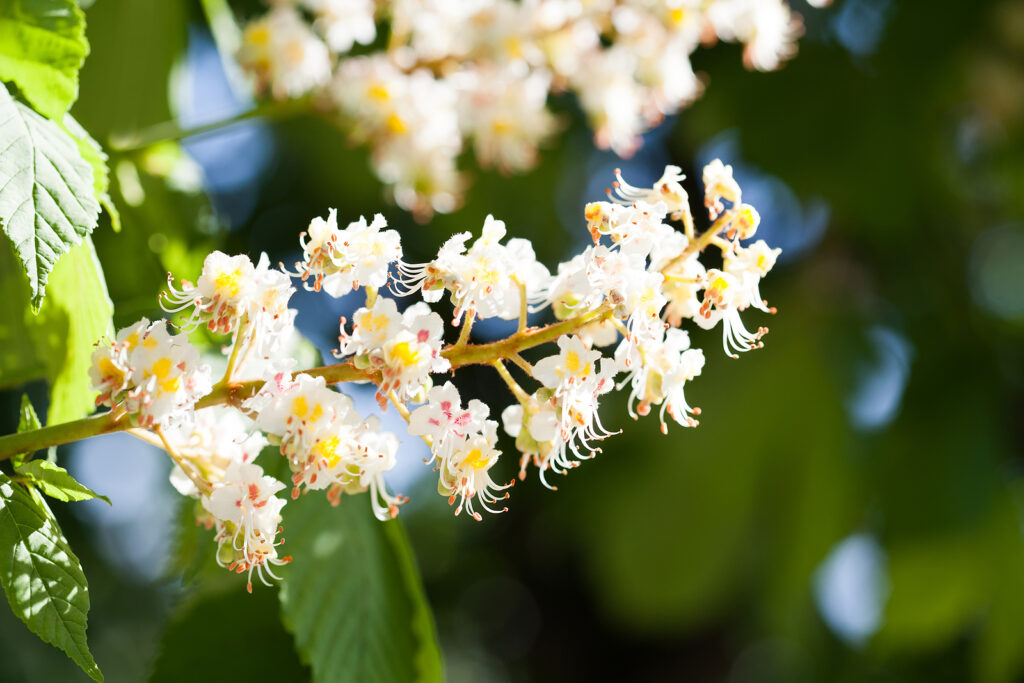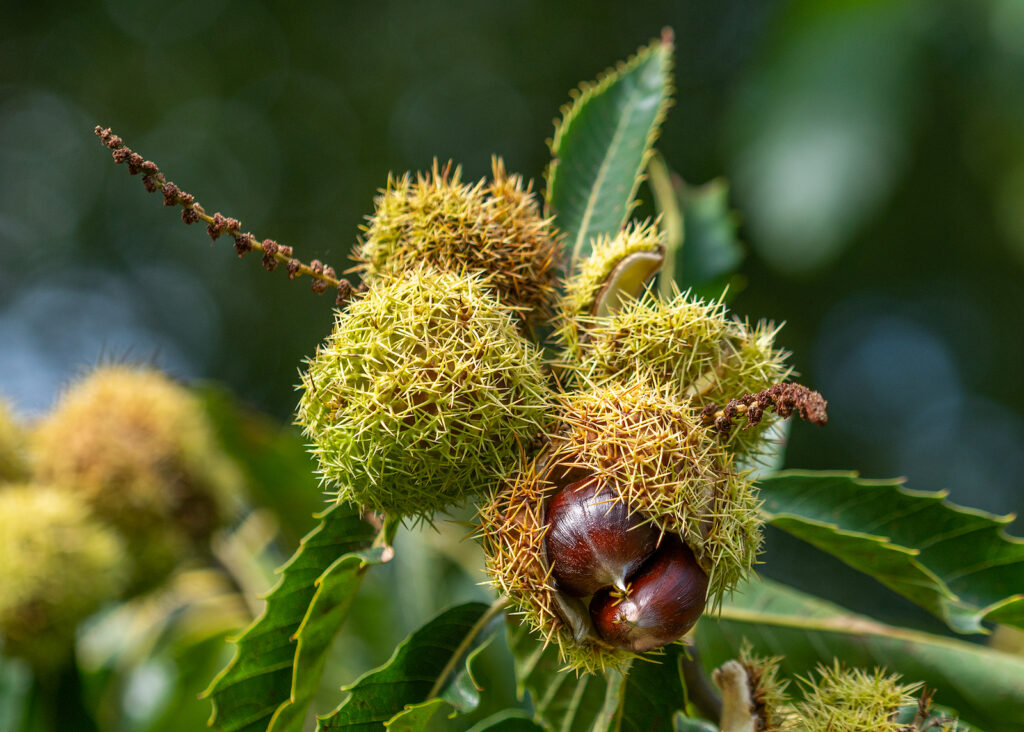Chestnut trees are large, dense-leaved additions to the landscape. They grow tall and wide and cast deep shadows.
Chestnuts can mature at 60 (18m) to 100 feet tall and wide. They should be planted where they have ample room to grow and thrive.
Chestnuts live from 100 to 1000 years. They can take several years to become established but when they are established, they grow more than 12 inches (30cm) each year. They will reach full size in 50 to 100 years.
Chestnuts have ridged bark and toothed leaves. They bear catkins in summer and nuts in autumn. Flowers are borne in showy, cylindrical catkins; nuts are enclosed in husks covered with spines. Chestnuts begin bearing nuts at about 12 years.

Get to know Castanea
- Plant type: Deciduous tree
- Growing zones and range: Zones 5 to 8
- Hardiness: Hardy
- Height and width: 60 feet (18m) tall or taller and 40 feet (12m) or more wide depending on the variety
- Foliage: Alternate to oblong or oval, veined, toothed dark to bright green leaves
- Flowers: Small, strongly-scented, creamy white flowers in long 8 to 10 inch (20-25cm) slim catkins in summer followed by large edible nuts in prickly-husked sometimes edible nuts.
- Bloom time: Summer
- Uses: Makes dense shade tree where there is space; litter and rank-smelling pollen may be noticeable; chestnuts are drought tolerant.
- Common name: Chestnut
- Botanical name: Castanea
- Family name: Fagaceae
Where to plant Castanea
- Plant chestnut in full sun.
- Chestnuts grow best in humus-rich, well-drained soil.
- Chestnuts prefer a soil pH of 4.5 to 6.5.
- Most species tolerant sandy soil.
- Chestnuts are intolerant of lime.
- Plant two or more varieties to ensure cross-pollination and substantial crop. Single trees bear lightly or not at all.
When to plant Castanea
- Set seedlings and container-grown tree in the garden in spring or fall.

Planting and spacing Castanea
- Space chests 40 feet (12m) apart depending on the variety.
- When planting chestnuts keep in mind, mature plants cast dense shade, and chestnuts live from 100 to 1000 years.
How to water and feed Castanea
- Water chestnuts deeply; slow, deep watering will direct deep root growth.
- Fertilize chestnuts with an all-purpose fertilizer in spring.
Castanea care
- Train chestnuts when young to grow as a single- or multitrunked tree.
- Stake young trees for the first 4 or 5 years.
Castanea pests and diseases
- Dieback, stem canker, heart rot, powdery mildew, anthracnose, and leaf scorch can occur.
- Chestnut blight (Endothia parasitica) killed most American chestnuts in the early twentieth century.
- American chestnuts were plagued by chestnut blight; other species and newer cultivars are generally blight resistant.

Castanea propagation
- Easy to grow from seed and seedlings. Young plants transplant well.
- Sow seed in a seedbed as soon as ripe.
- Graft chestnuts in late winter or bud in summer.
Castanea varieties to grow
- Castanea dentata, American chestnut: this species is nearly extinct as a result of chestnut blight.
- C. mollissima, Chinese chestnut: Grows to 60 feet (15.6m) with a rounded crown that can spread to 40 feet (15m) wide; leaves 3 to 7 inches (7.6-17cm) long with coarsely toothed edges.
- C. sativa, Spanish chestnut: Grows to 100 feet (33m) tall and wide; almost identical to American chestnut and is commonly grown in the West; can be grown only where chestnut blight is not a problem; produces the nuts sold commercially.
- ‘Dunstan’ and ‘Douglas’ hybrid chestnuts: Offspring of American and Chinese parents with characteristics intermediate between the two; hybrids tend to be blight resistant.



